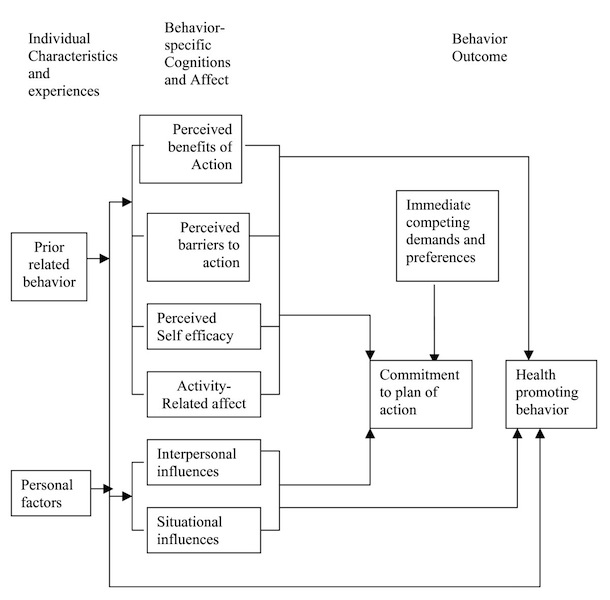Introduction
The Alzheimer’s disease is one of the most common dementia-related maladies that arise from damage or death of brain cells. Various health researchers have come up with theoretical frameworks that are aimed at alleviating the condition. This essay examines the health promotion model by Nola Pender with a view of providing the guiding propositions and its application in modern care institutions.
Theoretical Framework: Health Promotion Model by Nola Pender
In the wake of modern nursing practices, health promotion has become a significant concept in disease prevention and healing of patients. The context of this essay is based on Nola Pender’s health promotion model (Polit & Beck, 2007). This nursing theory holds that the healthiness of an individual does not only involve deterrence and cure of diseases but also entails factors that bring about positive and dynamic behavioral patterns. In a more specific perspective, the model focuses on the adolescent population who are at a vulnerable to certain maladies such as the Alzheimer’s conditions. At this phase of life, most people are not able to make independent decisions on matters that pertain to management of their health. For that reason, Nola Pender developed the health promotion model to envisage various health behaviors with reference to the background and acuities of a patient (Polit & Beck, 2007).

Overview and Guiding Propositions described in Theory
Various theoretical propositions are described in Nola Pender’s health promotion model. At the outset, both inherent and learned behaviors significantly influence the beliefs, effects, and demeanors of health promotion. This statement means that the health of an individual is somewhat dependent on previous behaviors. Secondly, individuals have a tendency of participating actively in activities that bring about personally treasured benefits (Wu & Pender, 2005). The expectancy-value theory underpins this proposition. Another proposition of the model is that apparent barriers can limit individual devotion to activities that promote healthy behavior. However, the application of nursing interpolations is a suitable approach to alleviate such hindrances. Furthermore, superficial sense of competence and personal worth augment the probability of committing an action that results in a certain behavior. People also have a tendency of assuming health-promoting behaviors that are exemplified by others through their perceptions, anticipations, and backings that they provide towards such comportments. Finally yet importantly, families, close contacts, and nurses increase the likelihood of engagement in certain health-promoting demeanors (Wu & Pender, 2005)
Application of Theory to your Study/Project
Nola Pender’s health promotion model is applicable in contemporary nursing practices. Raingruber (2014) reveals that the theory has been widely used in the treatment of the Alzheimer’s disease. In this context, the model provides a framework for formulating healthcare protocols and interventions that enable development of health promoting behaviors in individuals who suffer from the malady. However, the applicability of Pender’s model is highly dependent on the family and cultural background of the Alzheimer patients. Various researchers have acknowledged that the use of the model in health promotion practices has deepened understanding of behavioral patterns and risks that determine the vulnerability of an individual to the Alzheimer’s disease (Raingruber, 2014).
Conclusion
This essay has examined the theoretical propositions and applicability of the Nola Pender’s health promotion model in modern nursing institutions. There is a need to adopt the nursing theory in healthcare practices to promote the behaviors of patients. Most importantly, nurses should implement the Pender’s model in treatment of Alzheimer’s patients since the model is based on development of positive behaviors.
Reference List
Polit, D., & Beck, C. (2007). Nursing Research: Principles and Methods. Philadelphia: Lippincott Williams & Wilkins.
Raingruber, B. (2014). Contemporary Health Promotion in Nursing Practice. Burlington, Mass: Jones & Bartlett Learning.
Wu, T., & Pender, N. (2005). A panel study of physical activity in Taiwanese youth testing the revised health-promotion model. Family and Community Health, 28(2), 113.